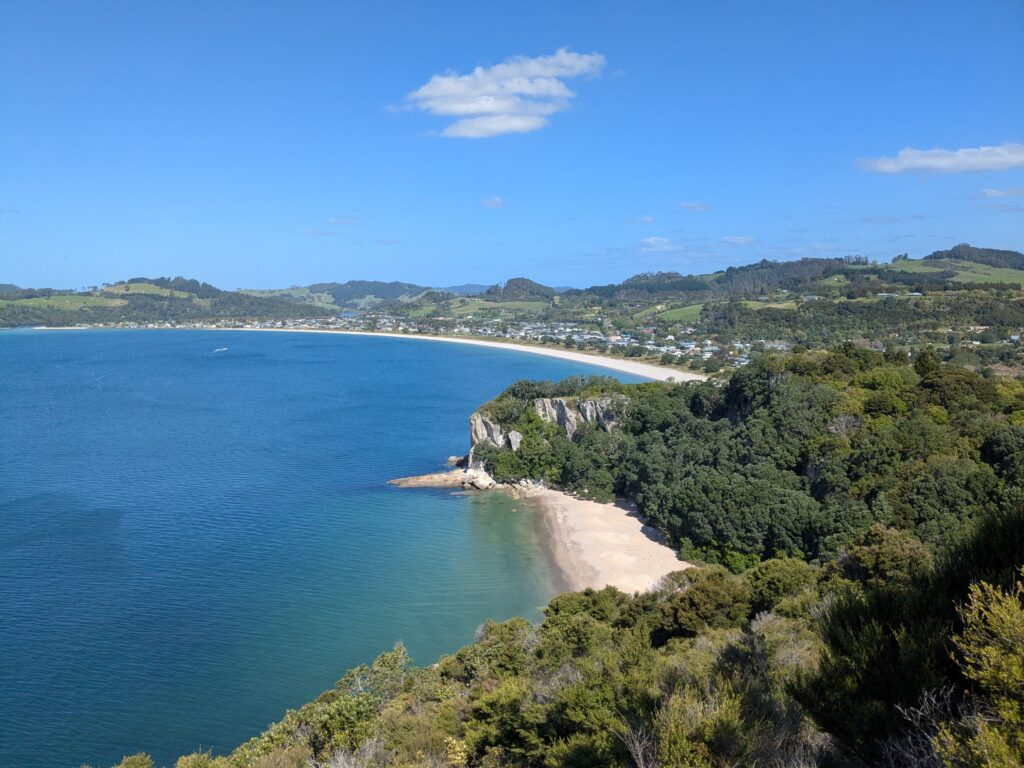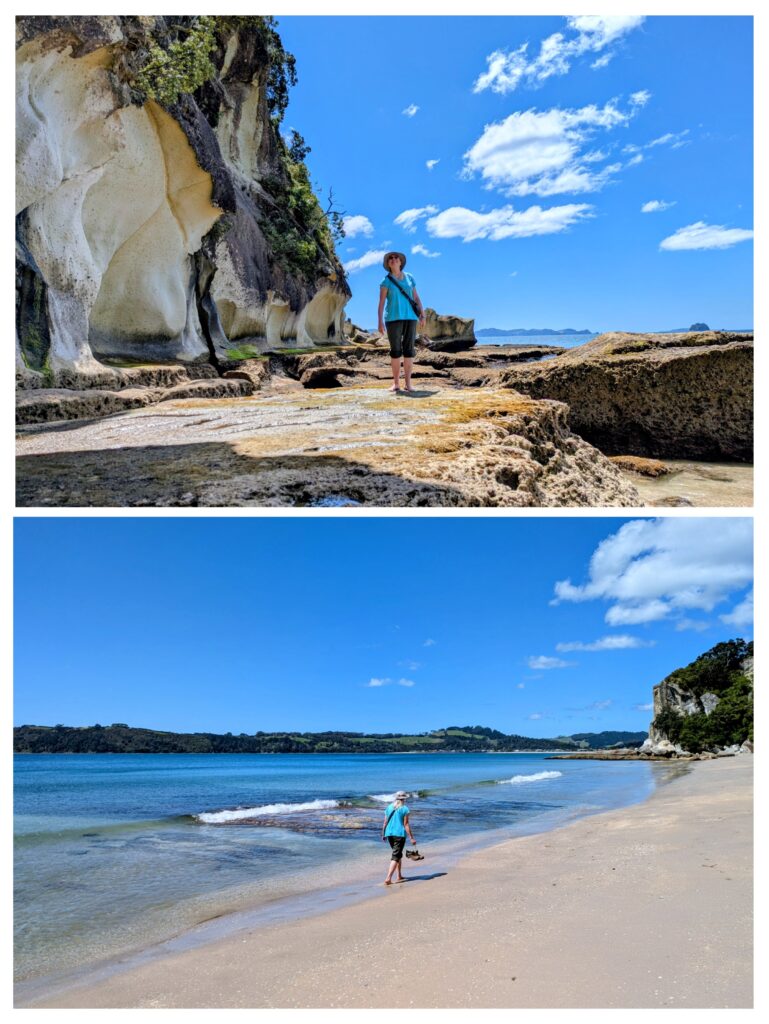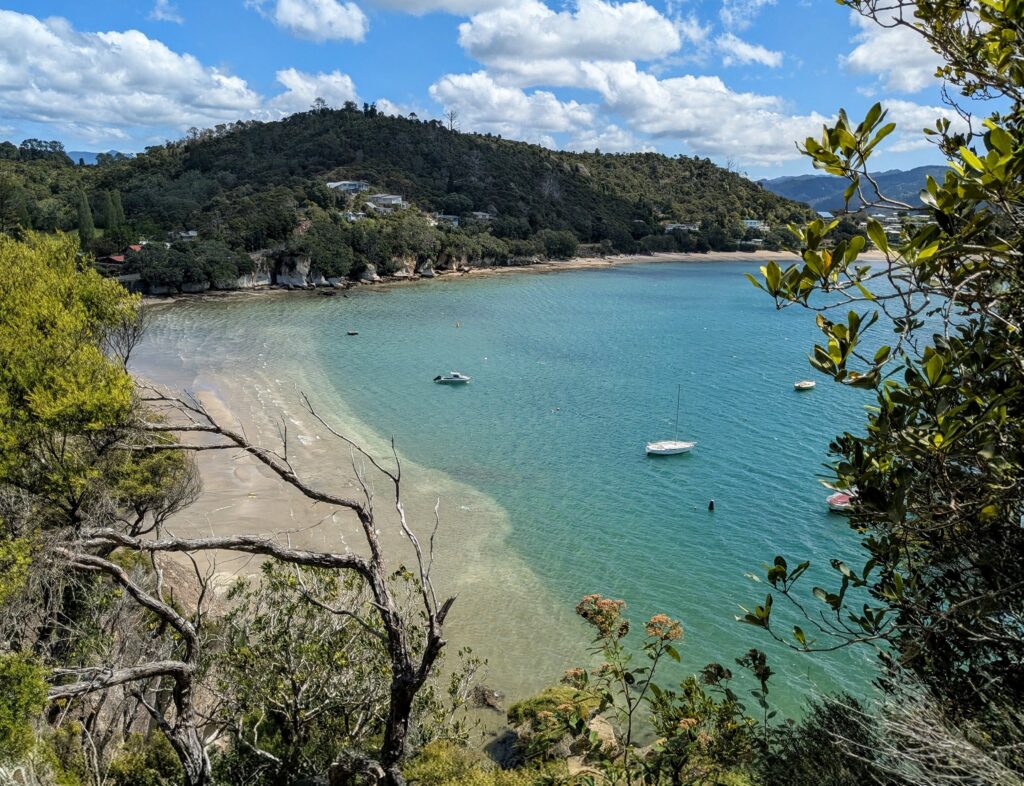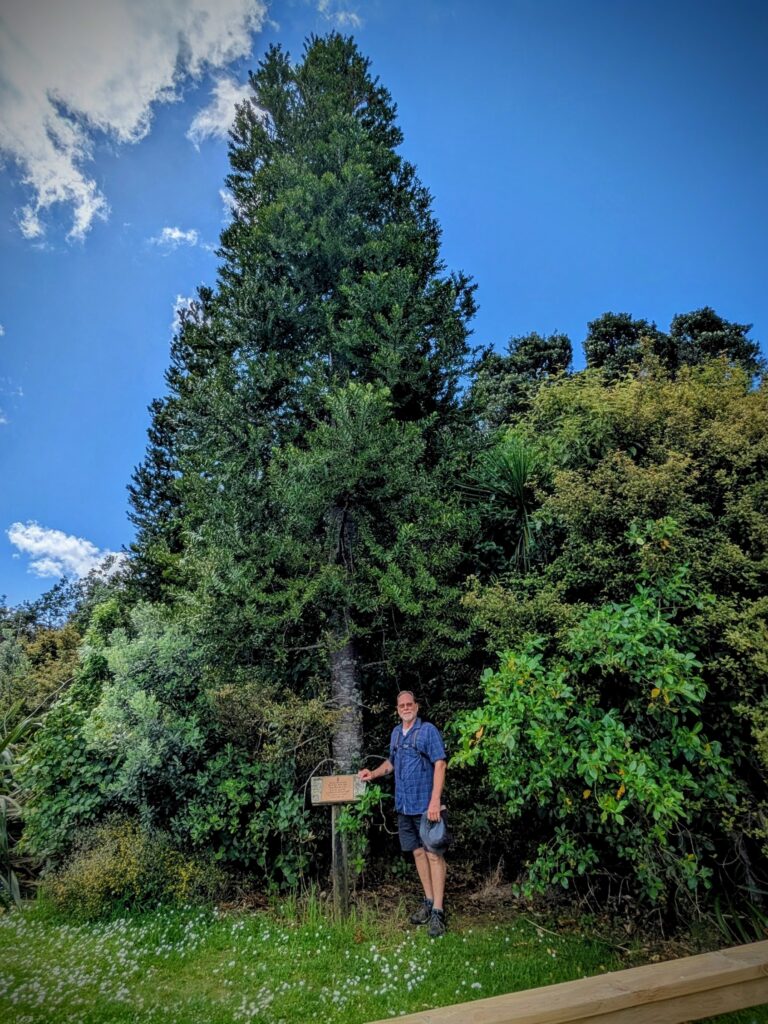Oct 20, 2025 Lonely Bay
We explored the Mercury Bay area, starting at Shakespeare Cliff Lookout.

Looking down at Lonely Bay, the small beach nearest the cliff, and the long curve of Cook’s Bay, the beach stretching into the distance.
Captain Cook anchored in this bay from November 5 to 15, 1769. He named the bay, Mercury Bay due to his assignment: “James Cook helped his astronomer Charles Green observe the transit of Mercury at Te Whanganui-o-Hei (Mercury Bay), Coromandel Peninsula. When the planets Mercury and Venus pass across the Sun, they are visible as small black dots. Timing these ‘transits’ from different locations was the first accurate way to determine the distance between Earth and the Sun. After observing the transit of Venus from Tahiti, Cook sailed HMB Endeavour towards the land skirted by Dutch seafarer Abel Tasman in 1642, which was sighted on 6 October 1769″.
Cook completed his observation of the transit of Mercury on November 9, 1769. Subsequently Cook explored the Mercury Bay area, traded with the local Māori for fresh fish mainly, and continued north to the Bay of Islands area. Mercury Bay was the first and most thoroughly explored area of Cook’s first voyage around New Zealand.
We hiked down a path to check out Lonely Bay.

The small, but remote beach is covered with a thick layer of seashells that have been ground down to a fine tan/white sand.

I took off my shoes to walk in the surf and explore the beach.
We hiked along Shakespeare Cliff and down to Maramaratotara Bay (Flaxmill Bay).

On returning uphill we passed this kauri, planted in 2001. It would be considered a juvenile. Kauri begin flowering from age 20 to 50 years. They can live over 1500 years!
